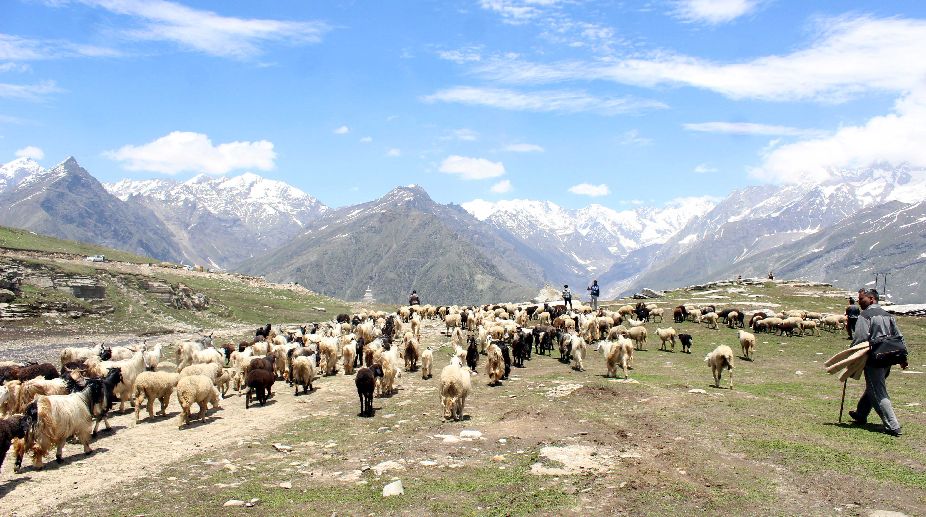Ahead of LS polls, 70343 licensed firearms deposited in Himachal Pradesh
Revealing this, a spokesperson of the Himachal Pradesh Election Department here on Tuesday, said: “Besides, these 3278 weapons have been impounded or cancelled.”

A shepherd with his hundreds of goats and sheep at Rohtang Pass 52 km from Manali (PHOTO: Lalit Kumar)
The pastoral nomads in Himachal Pradesh are bearing the brunt of development and lopsided environment concerns.
They are troubled by shrinking ‘greener pastures’ in the hill state and their ‘customary rights’ on grazing lands have been given a go-by since when the stricter laws to protect forests and wildlife came into force over last four decades.
And despite the fact that the traditional pastoral communities have a great ecological and economic role to play, foresters have not recognised their significant existence.
Advertisement
Over 50,000 families are dependent on pastoralism in HP, including shepherds seasonally migrating to grazing lands with flocks of sheep and goats and Gujjars with herds of buffaloes, since generations.
Around 25 lakh animals, including sheep, goats, buffaloes and cows serve as a livelihood for these pastoral communities in HP.
‘The pastoral nomads in Himachal are located mostly in Chamba, Mandi Kangra, Kullu, Kinnaur and Shimla districts, comprising communities like Gaddis, Gujjars, Negi and Kanets.
They migrate in summers for a period of three to four months to the high passes and alpine pastures of Bara Banghal, Chamba, Lahaul- Spiti and Kullu and in the winters they move to lower areas forests of Sirmaur, Nalagarh, Una, Bilaspur, Solan, Nangal, Kangra and Kalka.
As per environment activists, the pastoral nomads earlier used to follow defined routes to reach the grazing lands, often in remote areas, and they had proper ‘thikaney’ (points) for shelter, food and water while moving with animals.
However, in the course of development, their traditional paths have got disturbed and they are inconvenienced and are forced to move on roads with animals.
“Around 40 per cent of the geographical area of Himachal Pradesh had traditional ‘ghasnis’. The area has reduced very fast with the development and misplaced priorities. The Pine and Eucalyptus trees, the weeds and the construction of dams at various places have eaten up the pasture lands. There is no effort to regenerate them,” said Akshay Kumar Jasrotia, an activist and state coordinator for Van Adhikar Manch.
The Manch is organising unaware pastoral communities to get their traditional rights recognised as described in Forest Rights Act, 2006, which is being seen as a ray of hope for their fruitful sustenance.
The Van Adhikar Manch documents that how with the enactment of various laws for the protection of forests, wildlife and environment over four decades, the implementer forest department sidelined pastoral nomads and restricted their entry in pastures.
“The seasonal grazing by animals is treated as damaging for forests while ignoring that pastoralism boosts soil fertility across the path used by animals, checks invasion by exotic species and contributes to the local economy in terms of food (milk and meat), fibre and wool.”
Advertisement